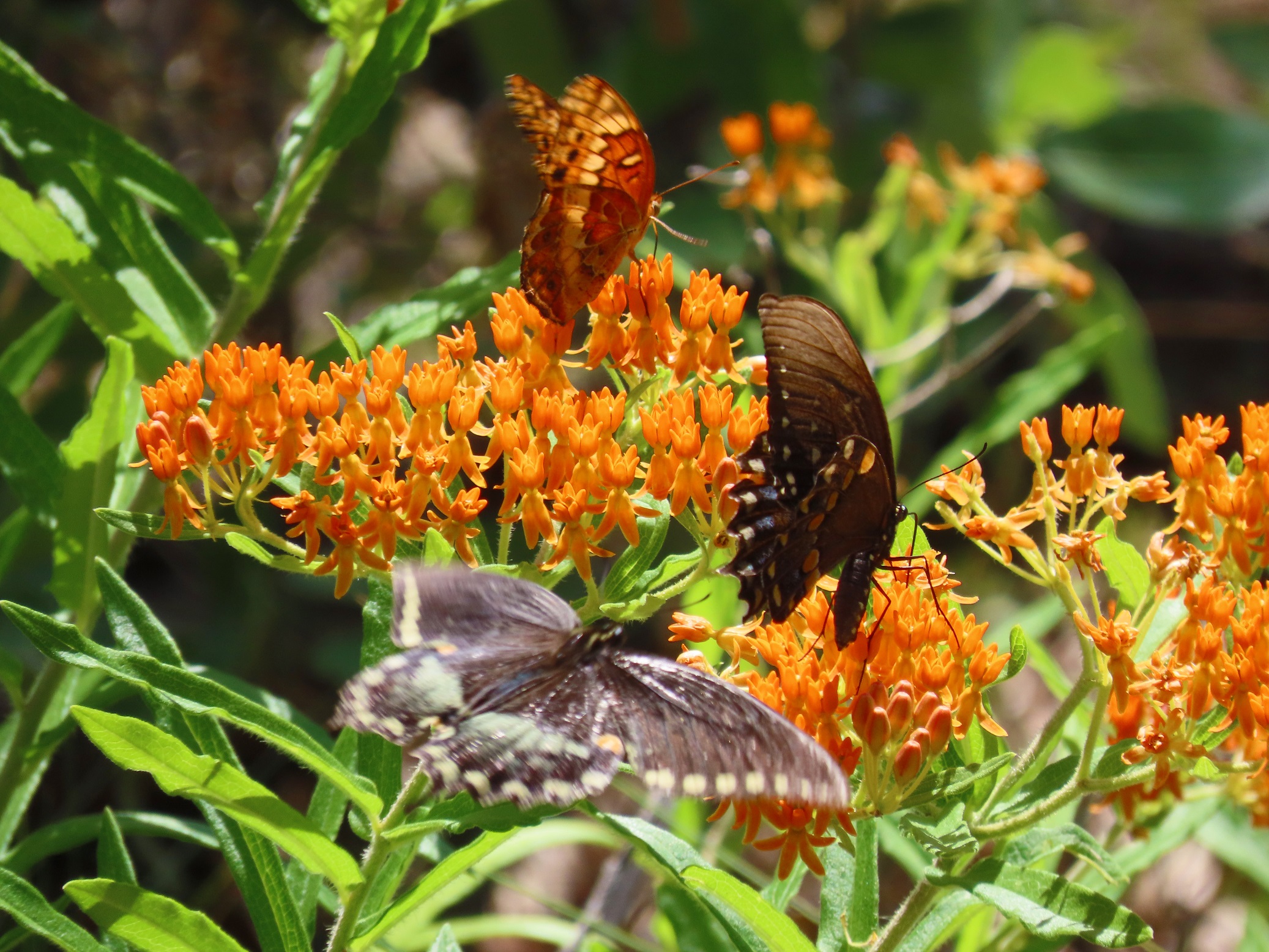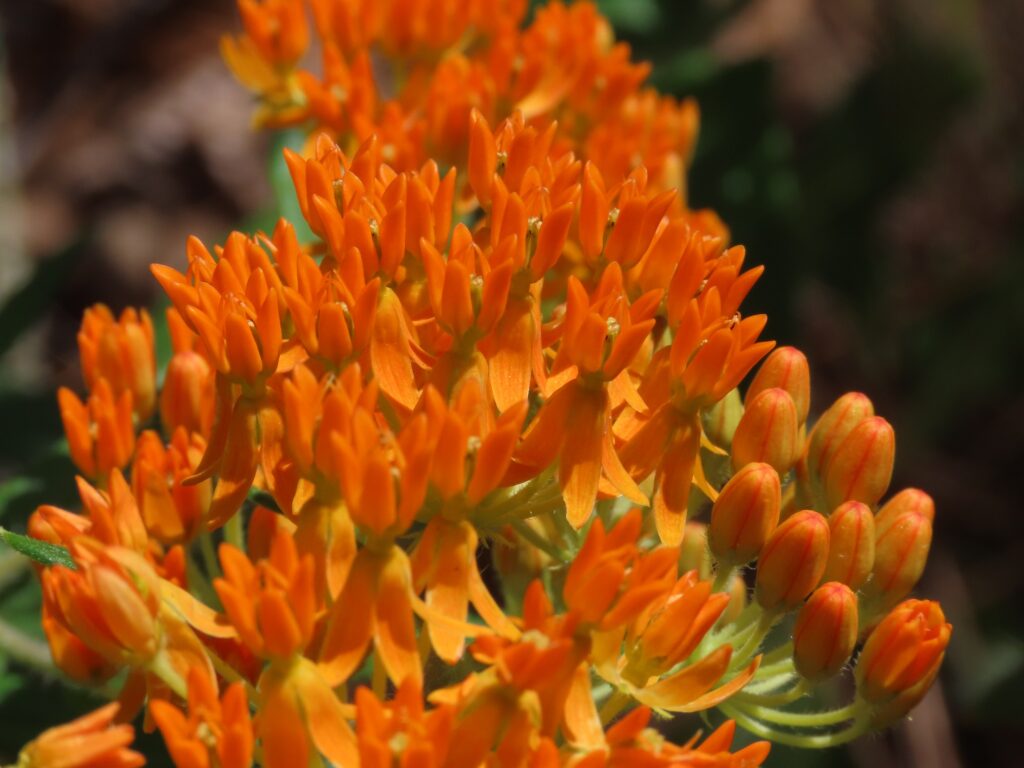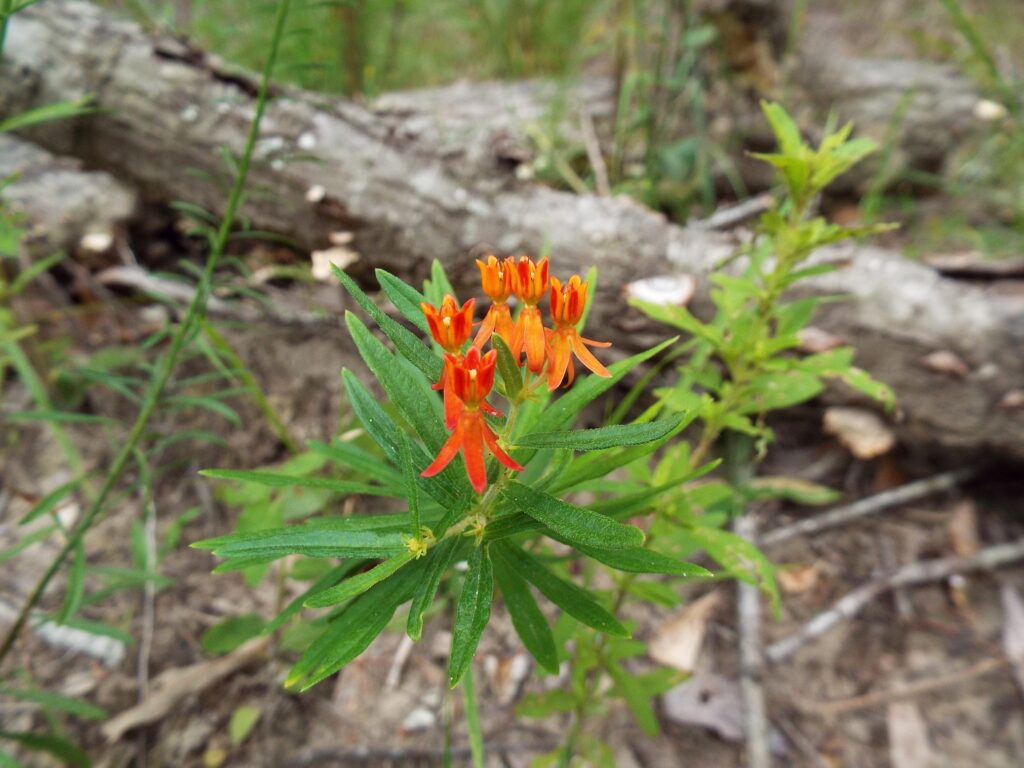



This week for Flora and Fauna Friday we have a favorite food for baby butterflies, bumblebees, and biting bugs. This week we’re admiring Butterflyweed (Asclepias tuberosa).
Butterflyweed is a native Milkweed that’s commonly found in the sandy soils of open pine woodlands. Butterflyweed produces a deep, thick taproot, much like a carrot, that allows the plant to proliferate in dry sandy soils and tolerate frequent fire. The plant is a short and compact perennial with narrow, emerald leaves. It blooms in late spring and early summer, producing a plateau of tiered orange flowers. The flower of a Milkweed is unique and complex. Upon examination, the petals are the five downward facing structures at the bottom of the flower. Above these sit five horns, each surrounded by a petal-like hood. At the bottom of these hoods are the nectar glands. Between these horned hoods is a fused and elongated set of five stigmas. At the top of this female structure are the male anthers. This whole central structure is called the gynostegium. Another quirk of Milkweed is that their pollen is not in loose grains. It’s in a sack of pollen called a pollinium. The pollinium is then attached directly to any visiting pollinators. This pollen sack must then be delivered to another flower by the chosen insect. Bees and Beetles are the preferred pollinators of Milkweed. This picky pollination technique explains why Milkweeds so often fail to fruit.
Milkweed gets its name from its poisonous, milk-white sap. This sap is a latex full of toxins that cause cardiac arrest when ingested. The sap is foul tasting and exudes quickly, filling the mouth of would be predators. As you likely know, Milkweeds are the host plant for the Monarch butterfly. Monarchs make use of the Milkweed’s namesake sap to protect themselves. Milkweed is also a favorite food of the creatively named Large Milkweed Bug (Oncopeltus fasciatus). The Milkweed Bug uses its sharp proboscis to poke into a Milkweed plant and suck out the heart-stopping sap. From this ichor the Bug gains the same poisonous armor as the Monarch, which both advertise with bright orange and black colors.